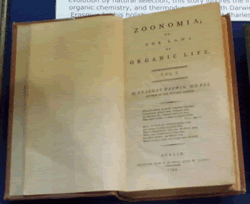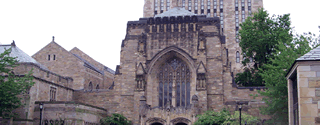| Sterling Memorial |
| Archives |
| Music |
| Divinity |
| Forestry |
| Kline Sciences |
| Medical Historical |
| Exhibit Map |
![]()
Erasmus
Darwin, Zoonomia, 1794 Like many Nature Philosophers, Erasmus Darwin (1731-1802) understood the “cycle of life” as a universal law of nature. “this perpetual chain of causes and effect, whose first link is rivetted to the throne of God, divides itself into innumerable diverging branches. . . . As every cause is superior in power to the effect which it has produced, so our idea of the power of the Almighty Creator becomes more elevated and sublime, as we trace the operations of nature from cause to cause, climbing the links of these chains of being, till we ascend to the Great source of all things.” (p. 584) |
||
 |
||
Whitney Humanities Center
Yale University
53 Wall Street
P.O. Box 208298
New Haven, CT 06520-8298
Office: (203).432.3112
lloydackert@sbcglobal.net
The
Sterling Memorial Exhibit is located in the Overflow Case
to the left of the circulation desk. The Sterling Memorial
Library is located at
120 High Street
Yale University
New Haven, CT 06520
Map, Directions
